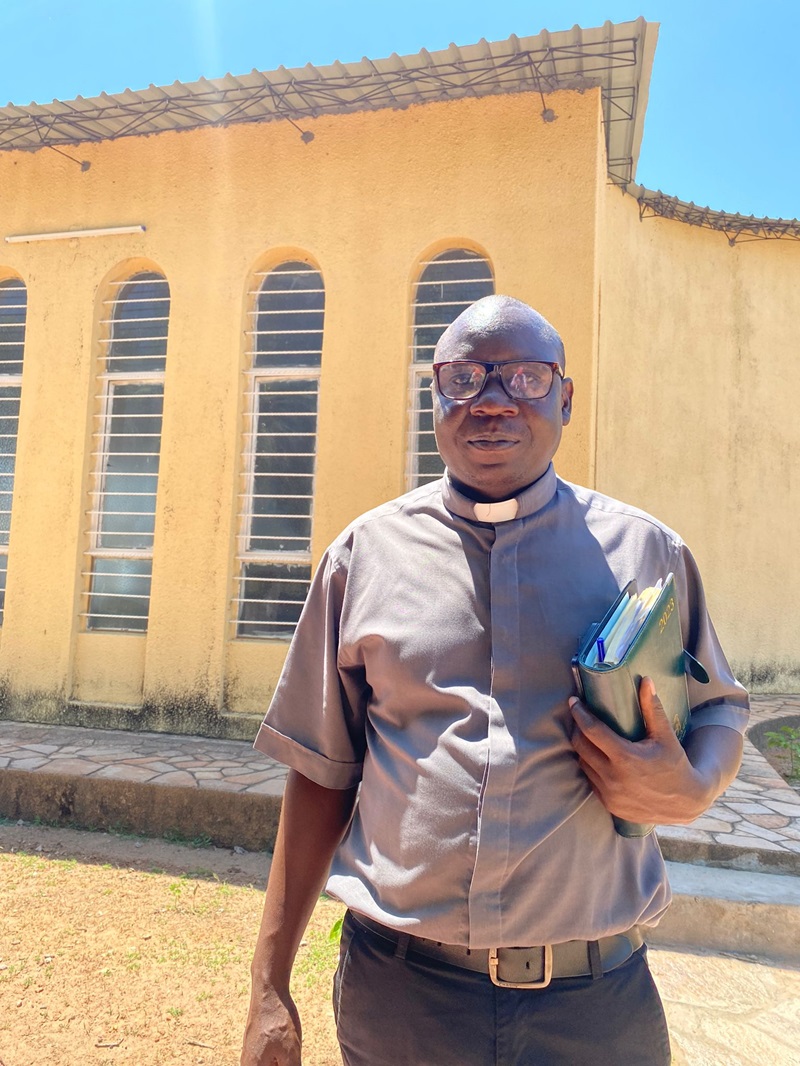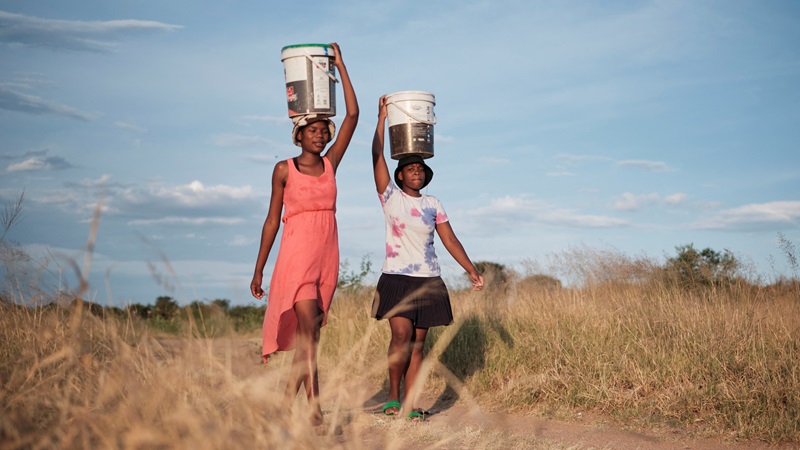Since January, swathes of southern Africa have been suffering from a severe drought, which has destroyed crops, spread disease and caused mass hunger. But its causes have raised tough questions for the new UN fund for climate change losses.
Christopher Dabu, a priest in Lusitu parish in southern Zambia, one of the affected regions, said that because of the drought, his parishioners “have nothing”- including their staple food.
“Almost every day, there’s somebody who comes here to knock on this gate asking for mielie meal, [saying] ‘Father, I am dying of hunger’,” Dabu told Climate Home outside his church last month.
The government and some humanitarian agencies were quick to blame the lack of rain on climate change.
Zambia’s green economy minister Collins Nzovu told reporters in March, “there’s a lot of infrastructure damage as a result of climate change”. He added that the new UN-backed loss and damage fund, now being set up to help climate change victims, “must speak to this”.

Reverend Christopher Dabu outside his church in Lusitu, Zambia (Photo: Joe Lo)
But last week, scientists from the World Weather Attribution (WWA) group published a study which found that “climate change did not emerge as the significant driver” of the current drought affecting Zambia, Zimbabwe, Malawi, Angola, Mozambique and Botswana.
Instead, they concluded that the El Niño phenomenon – which occurs every few years with warming of sea surface temperatures in the eastern Pacific Ocean – was the drought’s “key driver”. They said the damage was worsened by the vulnerabilities of the countries affected, including reliance on rain-fed farming rather than irrigation.
Nonetheless, briefing journalists on the study, co-authors Joyce Kimutai and Friederike Otto said climate change does make El Niños stronger and more frequent – and therefore could be playing an indirect role in the southern African drought. Otto noted that climate change “might have a small role but not a big one”.
While WWA studies have often found that disasters like this are driven by climate change, there have been other cases where they have played down that link – as with droughts in Brazil in 2014 and Madagascar in 2021, and floods in Italy in 2023.
The complex nature of the science raises a dilemma for those now designing the fledgling loss and damage fund.
Its board holds its first meeting in Abu Dhabi this week. In three days of talks, the board’s 26 members will discuss the fund’s name and how to decide where it will be hosted and who will lead it. Trickier issues like the role of climate change attribution will be left to future meetings.
Climate Home spoke to several experts and two of the fund’s board members, whose opinions were divided on whether the link between climate change and a particular disaster should have to be proven before funds are dished out to affected communities.
Droughts and climate change
Egyptian climate negotiator Mohamed Nasr, a member of the new fund’s board, said he thought triggers for funding “would include the climate relation to the losses and damages”.
But to judge that connection, he said the board would “rely on confirmed science per the Intergovernmental Panel on Climate Change (IPCC) and United Nations Environment Programme (UNEP) rather than individual studies”. He said the IPCC and UNEP “provide the scientific reference needed as they bring all views and assess the credibility and scientific basis”.
The IPCC does not do original research, including attribution studies, but every five to seven years it compiles existing research to reach conclusions about climate change, including its impacts. The last IPCC report focused on that topic in 2022 said “increases in drought frequency and duration are projected over large parts of southern Africa”.
UNEP currently does not conduct attribution studies, with a spokesperson saying this was “due to resource constraints” but adding “we hope to do more in the future”.
Another loss and damage fund board member, who wanted to remain anonymous, said the fund should only disburse money for loss and damage caused by climate change. But they asserted that due to the “chicken and egg” link between climate change and El Niño, the current southern African drought is climate-driven and so its victims should be entitled to funding.
‘Theoretical disputes’
Mattias Söderberg, who works for humanitarian organisation DanChurchAid – which has been defining and addressing loss and damage since 2019 – said attribution “is not always easy”.
But, he added, “people facing disasters should not be left behind because of theoretical disputes about attribution”.
Speaking ahead of a visit to a Kenyan refugee camp for people displaced by what he calls “loss and damage and climate-related conflicts”, he said, “I’m pretty sure they will be frustrated if they knew funding to help them cope could be questioned.”
The loss and damage fund, with advice from scientists, should draw up categories of disaster that tend to be driven by climate change – like heatwaves and droughts but excluding earthquakes which are not, he added.
Tensions rise over who will contribute to new climate finance goal
Zoha Shawoo, who researches loss and damage at the Stockholm Environment Institute, said that even if climate change played only a small role in the latest southern Africa drought, previous climate disasters had made the region’s people more vulnerable to the drought.
In addition, the current dry spell leaves them more vulnerable to future climate disasters, she added. “If they don’t receive financial support for recovery, future losses and damages will be a lot worse,” she said.
Gernot Laganda, director for climate and resilience at the UN’s World Food Programme, said that a formal attribution requirement for the loss and damage fund feels like “overkill” for a still relatively small fund. Transaction costs should be kept as low as possible, he added.
Data gaps
Kimutai, who worked on the WWA study, said she was confident the group had enough data to reach its conclusions on this particular drought. But she told a webinar hosted by the CGIAR agricultural research centre last month that a lack of data in many poorer countries means a funding requirement of attribution to global warming would be “detrimental to climate justice”.
In 2022, WWA was unable to work out the role of climate change in a drought in the Sahel region of Africa, partly blaming a lack of data. One of the drought-hit countries was Mali – which is three times the size of Germany. Mali has just 13 active weather stations, while Germany has 200, according to Bloomberg.
Limiting frontline voices in the Loss and Damage Fund is a recipe for disaster
Kimutai added that, besides data, there is a lack of expertise in doing these kinds of studies in the Global South.
Any moves to deny funds to vulnerable people impacted by drought – whatever the causes – are likely to be met with anger. Speaking to journalists about the southern Africa emergency a few days after the WWA study was issued, Chikwe Mbweeda, Zambia director for the aid agency CARE, said that “for us, we definitely understand that [the drought] is coming from the climate change effects”.
(Reporting by Joe Lo; editing by Megan Rowling)
